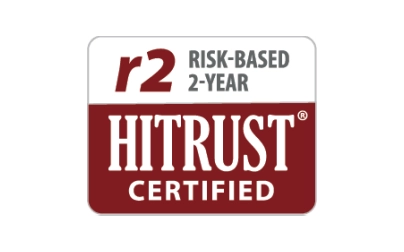Nurse triage companies like Carenet Health offer symptom assessment and care information from registered nurses (RNs) for a wide range of callers with health concerns, from parents of distressed newborns to seniors who have questions about their medications.
The best telehealth solutions tailor their nurse advice approach to each individual’s needs and foster a human connection. This type of personalized experience not only helps quell patient anxiety, but also serves to keep patients and health plan members coming back. And that’s a positive driver for modern, on-demand, 24/7 care access and the cost-savings it can deliver.
At Carenet, our nurse triage team speaks with thousands of patients every day on behalf of hundreds of health plans and healthcare providers. Obviously, in telehealth, some of the tools used to put patients at ease during in-person care interactions simply aren’t an option. So how do Carenet’s telephonic-based triage nurses make each interaction personal, compassionate and meaningful—so much so that their industry-leading patient satisfaction ratings consistently range from 95% to 100%?
Our clinical teams will tell you it’s all in the culture, training and support provided to our nurses. To get a deeper look, we went straight to the source and asked our telehealth RNs to share some of the ways they’re making interactions more intimate, impactful and effective—even as case volume has increased during a global pandemic.
1. Thinking compassion—and making sure it’s conveyed in tone of voice. A nurse’s warm, welcoming tone on the other end of the line can instantly calm a worried caller—and patients are comforted when immediately met with compassion. Speech that sounds kind, caring, respectful and professional is critical. Also important is appropriate volume, inflection and speed based on each patient’s vocal demeanor.
As explained by one Carenet nurse: “If someone is very anxious or emotional, I try to be very soft in my response. Interjecting words of empathy and phrases of understanding and confirmation can show someone that you’re listening and really trying to see where they’re coming from.”
Another team member added, “I try to put myself in their shoes or think of them as my family member. Patients can sense that in your tone of voice and by the word choices you make.”
2. Smiling, even when no one can see it. “Wearing” a smile throughout a nurse triage call and, as one nurse puts it, “letting that smile spread into our speech,” can make a difference in how the caller receives a nurse’s recommendations. Smiling can also help the RN adopt a hospitality mindset during telehealth connections.
One of our nurses described it this way: “I try to make patients feel comfortable with me and take a quick moment to interject a little humor if at all possible or appropriate, or find a way to break the ice, so they can feel comfortable opening up more.”
3. Acknowledging and validating important feelings. Truly listening to their concerns and responding to what they’re feeling can go a long way in easing callers’ stress and frustration. This was especially important during the COVID-19 crisis, when patients had difficulty reaching their primary care providers.
“I try to work in empathetic statements, so they know I care about their personal situation, like ‘I’m so sorry to hear that,’ or ‘I’m glad you’re feeling a little better today,’” a Carenet nurse said. “I let them talk, tell them I understand and remind them we are just a phone call away… this lets them know they are never alone.”
Another Carenet colleague agreed, opting for statements that validate callers’ fear or frustration—for example: “That pain sounds pretty strong. I can understand your frustration and see you’ve been dealing with it on your own for quite a while,” or “No wonder you called. If my heart was feeling like that, I’d call, too.”
4. Adding a personal touch. Building rapport during the brief time together is also important for bonding, establishing trust and conveying to the caller their importance and the nursing professional’s concern for their needs, advises one Carenet RN.
“Instead of just going through each symptom assessment question, I make sure to address their specific concerns and answer their specific questions,” she says. “The goal is to make sure the patient feels connected and open to sharing their feelings, which will in turn make them more willing to follow your advice and be thankful they reached out for help.” She adds, “If I have an anecdote that pertains, I share it.”
Another Carenet RN says that doing a quick review of each caller’s personal record and any history of previous calls demonstrates that the telehealth team knows and understands them.
5. Remembering that slow and steady wins the race. Taking the time to really learn about the patient’s health concern at hand helps ease caller fears and concerns. One Carenet nurse uses guidance and patience as the foundation of her calls.
“I try to repeat back some of the important things the caller says, so they know that I’ve heard them, and I never rush even if we are in a time crunch,” she says. “It’s about treating each caller like they are the only person in the world in that moment.”
Another Carenet RN uses personal memories and visualization to make the experience meaningful: “I picture the time my grandmother was in pain and no one would listen, or picture my grandpa getting lab results with no one to explain what they mean. I think, ‘How can I change this person’s perception about healthcare by listening and being attentive?’”
6. Leveraging the power of education. Carefully explaining things can help an RN build an instant relationship with the patient. When callers are offered valuable information after symptoms have been assessed, they tend to respond better and feel more at ease—an approach that has proven very helpful in reassuring callers who are worried about COVID-19.
“If some form of summarized information is given on an urgent issue, I find patients are more likely to comply,” says a longtime Carenet nurse. “For non-urgent symptoms, offering specific examples of symptoms to watch for that would make the situation urgent seems to help enhance the interaction.”
A Carenet colleague adds, “If you teach your patient one thing with each call that helps them—and they feel like you were easy to talk to—they will call again.”
7. Going the extra mile and saying “thanks.” Adding value with extra effort is key, says one Carenet nurse. “It’s important to remember that we can help find hope for the patient—such as arranging transportation to the doctor if necessary, searching for a nearby pharmacy, providing referrals or giving directions to a facility.”
Another RN heralds the importance of letting patients know you’re just a phone call away: “I tell them I’m glad they called, and add something like, ‘Please call us back anytime; we’re always here to help.’”
—
Carenet’s high-performing nurse advice line and triage center is staffed by RNs with an average of 15 years of clinical experience who consistently apply telehealth best practices. Contact Carenet Health to talk to us about optimizing your telehealth solutions.


